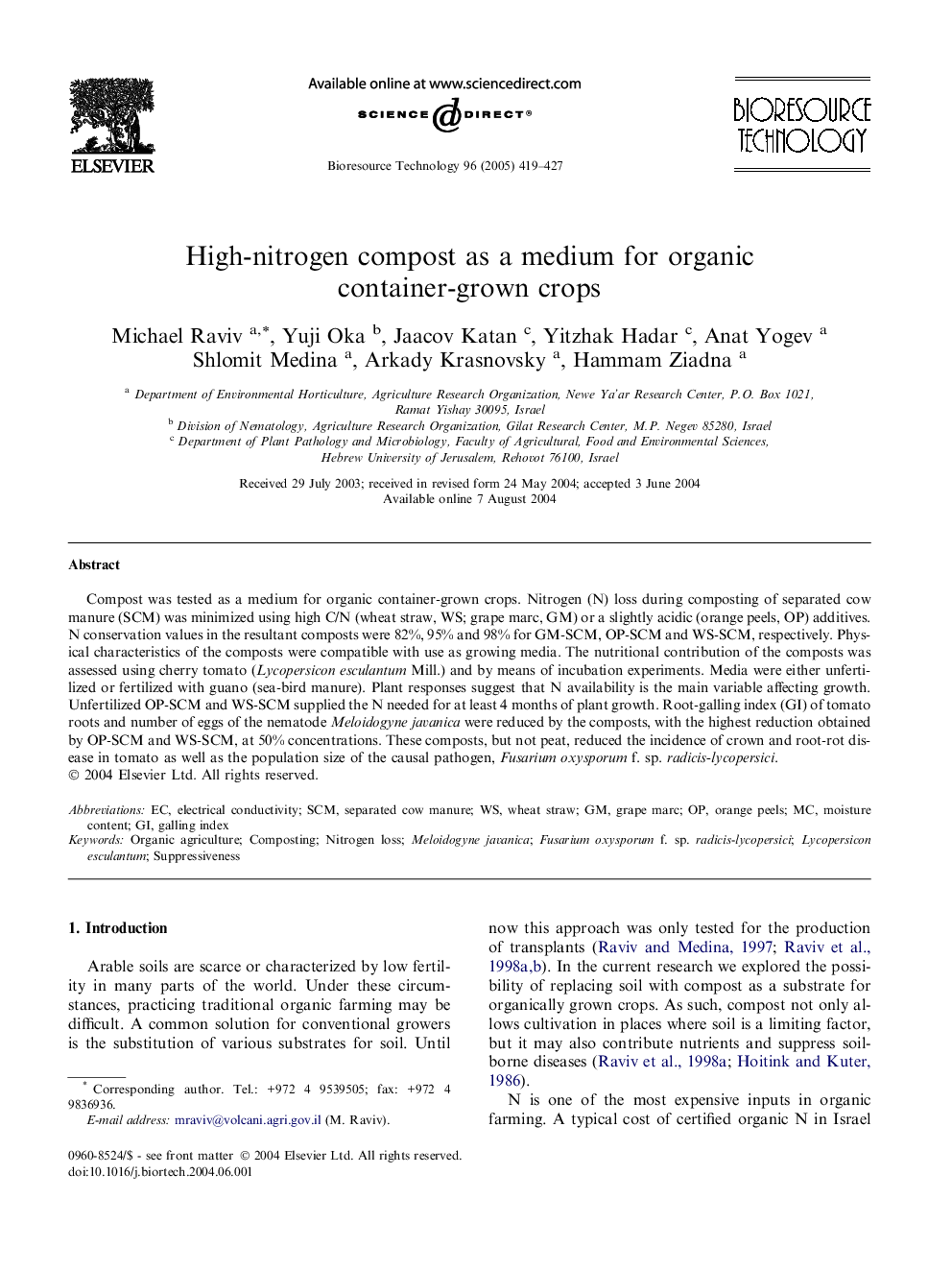| Article ID | Journal | Published Year | Pages | File Type |
|---|---|---|---|---|
| 10396144 | Bioresource Technology | 2005 | 9 Pages |
Abstract
Compost was tested as a medium for organic container-grown crops. Nitrogen (N) loss during composting of separated cow manure (SCM) was minimized using high C/N (wheat straw, WS; grape marc, GM) or a slightly acidic (orange peels, OP) additives. N conservation values in the resultant composts were 82%, 95% and 98% for GM-SCM, OP-SCM and WS-SCM, respectively. Physical characteristics of the composts were compatible with use as growing media. The nutritional contribution of the composts was assessed using cherry tomato (Lycopersicon esculantum Mill.) and by means of incubation experiments. Media were either unfertilized or fertilized with guano (sea-bird manure). Plant responses suggest that N availability is the main variable affecting growth. Unfertilized OP-SCM and WS-SCM supplied the N needed for at least 4 months of plant growth. Root-galling index (GI) of tomato roots and number of eggs of the nematode Meloidogyne javanica were reduced by the composts, with the highest reduction obtained by OP-SCM and WS-SCM, at 50% concentrations. These composts, but not peat, reduced the incidence of crown and root-rot disease in tomato as well as the population size of the causal pathogen, Fusarium oxysporum f. sp. radicis-lycopersici.
Keywords
Related Topics
Physical Sciences and Engineering
Chemical Engineering
Process Chemistry and Technology
Authors
Michael Raviv, Yuji Oka, Jaacov Katan, Yitzhak Hadar, Anat Yogev, Shlomit Medina, Arkady Krasnovsky, Hammam Ziadna,
